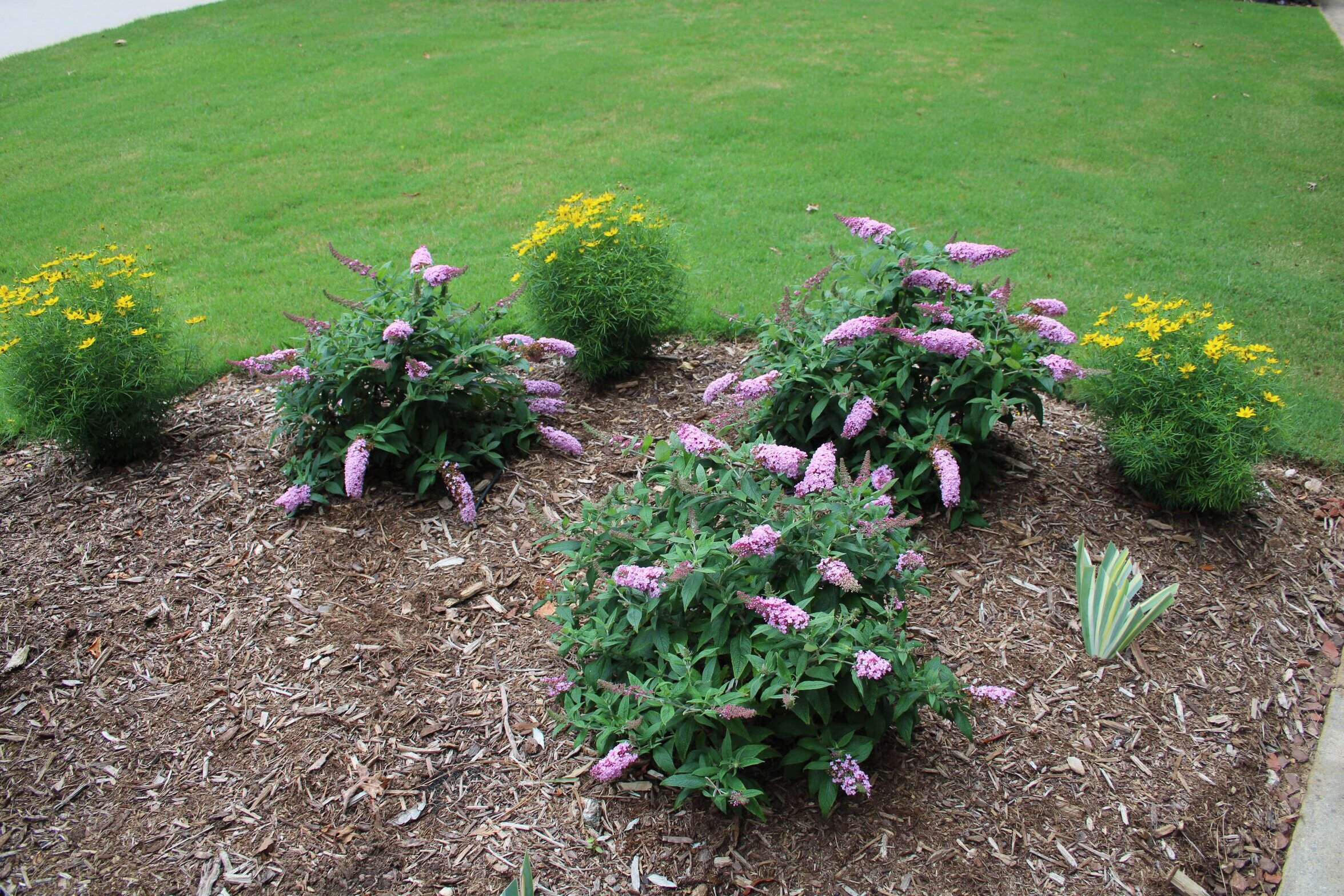My favorite flowering shrub (currently, anyway) is Buddelia, commonly known as Butterfly Bush. Before you start criticizing this choice as invasive and non-native, let me tell you that all eight of mine are sterile, in the Pugster® family, hybrids from Proven Winners. I have the blue, which is really a shade of blue-purple. The small size makes them compatible with the perennials in my mixed beds. The ones in the pollinator bed near my orchard are four years old, and have not exceeded the labeled height of three feet.
The positives: Butterflies, bees, and hummingbirds adore the flowers. Plants do not require deadheading, but will look better if the spent flowers are removed. In my zone 8 garden, they are semi-evergreen, retaining enough leaves to avoid looking naked in winter. In colder zones, top growth may die back to the ground in winter and should be removed but spring growth is rapid. Deer and rabbits leave them alone. Shrubs bloom throughout the entire summer and into fall. The conical flower panicles of the Pugsters are unique, resembling a tightly packed lilac. Buddleias tolerate heat, humidity, and drought. They are hardy in zones 5 – 9, and are not picky about soil but do require full sun. For all types and cultivars, spring planting is preferred to fall planting.
The negatives: While butterflies swarm the flowers for nectar, the caterpillars that produce those beautiful insects will not dine on the foliage. Other food sources must be provided for the larvae. Plants flower on new growth, so an occasional cut-back is needed for maximum flower power. Older cultivars are NOT sterile and produce so many offspring they are listed as invasive in nine states. Standard Buddleia varieties can be much taller, up to twelve feet. If the sight of dead brown blooms is offensive (I get it, I’m a bit compulsive in that regard), regular removal can be a twice-weekly chore.
Buddleia is sometimes spelled Buddleja but in both cases is pronounced bud-lee-uh. The leaves have an attractive grayish cast that contrasts with brighter companions. Flowers are lightly fragrant.
The National Garden Bureau has named Buddleia as the 2024 Shrub of the Year. Of particular interest is Baby Buzz®, a dwarf cascading form that can be used in a hanging basket. In addition to the sterile Pugster series mentioned above, Lo and Behold® series and the Miss series (Miss Molly, Miss Ruby, Miss Violet) are sterile and the Chrysalis™ series is low seed set and also small enough to be used in hanging baskets and containers. The Cascade Collection is low seed set on a large plant for a flowering backdrop. Gold Drop and Butterfly Gold have either variegated or golden foliage.
Look closely and you can see: spicebush swallowtail, Eastern swallowtail, Gulf fritillary, a tiny silver-spotted skipper, and a bumble bee.



